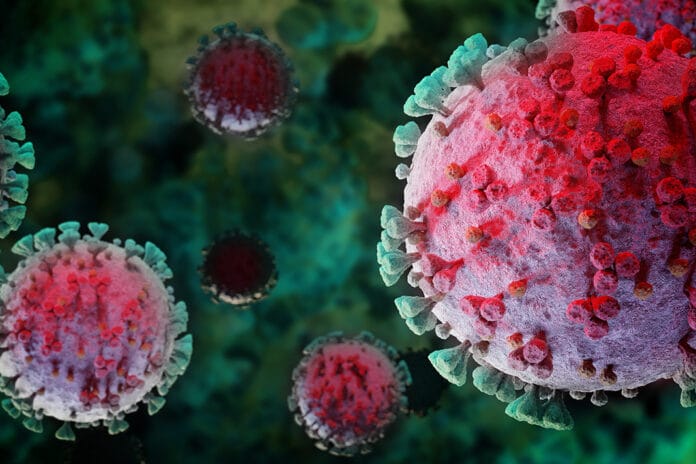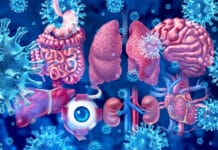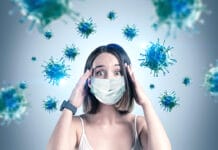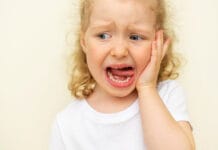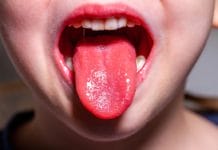Editor’s Note: As new research emerges, information about COVID-19 can change. We have made every attempt to ensure this article is up to date at the time of its original publication (September 20, 2023). However, knowledge about COVID-19 is constantly evolving.
The COVID-19 pandemic has been a serious global concern that has raised an enigma about its pathophysiology. The Centers for Disease Control and Prevention reported, “In the first two years of the pandemic, COVID-19 was identified as the third leading cause of death in the United States, trailing only heart disease and cancer.”1
Numerous studies have evaluated the indirect correlation between the severity of COVID-19 and periodontitis. The World Health Organization estimates severe periodontitis affects 19% of the global population, making an indirect correlation between periodontitis and COVID-19 of great interest.2 Periodontitis typically shows varying degrees of progression based on an individual’s systemic health; therefore, it may be a potential co-factor in worsening many systemic conditions or vice versa.3
Periodontitis, usually triggered by periodontal pathogens, is intensified by individual host response. If left untreated, chronic inflammation of the periodontium leads to low-degree systemic inflammation because of increased levels of cytokines, such as tumor necrosis factor-α, IL-1β, IL-4, IL-6, and IL-10, c-reactive protein, and ferritin.3 However, host genetics and individual immune responses will determine the disease’s progression rate and severity.3
Immunological Correlation between COVID-19 and Periodontitis
Many works of literature have shown an association between periodontal disease and systemic conditions, the most common being diabetes mellitus, pregnancy complications, pneumonia, and cardiovascular diseases. With this, it is essential to understand the difference between causation and association. Causation refers to an exposure that produces an effect. Even though the determination of a causal relationship is complicated, it is well supported by scientific evidence. An association is a connection between two or more factors. However, it lacks a true mechanism or explanation of connections. Associations require further research to identify the mechanism that connects the factors.4
Recent studies have shown an association between COVID-19 and periodontal disease expressing exaggerated inflammatory responses. This exaggerated inflammatory response can contribute to a more severe response known as cytokine storm syndrome, which is a standard feature in severe COVID-19 cases. Cell penetration and replication of the virus leads to pyroptosis, an inflammatory programmed cell death that stimulates inflammatory cytokines, causing tissue-wide damage.5
When pyroptosis is uncontrolled, it can lead to cytokine storm syndrome.5 The cytokine storm observed in patients with COVID-19 was characterized by hypercoagulability, multi-organ failure, and shock.6 An estimated 40% of globally confirmed cases were asymptomatic, and 5% of patients developed severe symptoms such as acute respiratory distress syndrome and multi-organ failure necessitating ICU support.6
The theory has stated that the primary receptor for SARS-CoV-2 is angiotensin-converting enzyme-2 (ACE-2) expressed in the respiratory tract, cardiovascular, central nervous, gastrointestinal systems, and oral mucosa.5,6 ACE-2 has been the primary receptor for the virus’ entry into target cells.7 The detection of SARS-CoV-2 in the gingival crevicular fluid has introduced a new possibility to the virus’ entry site.8
According to the hypothesis proposed by Bardan et al. (2020), periodontal pockets could be the niche and reasonable reservoirs for SARS-CoV-2.7 Standard immunologic features common in periodontal disease and COVID-19 have supported the hypothesis. Prior to the pandemic, dental literature mentioned increased c-reactive protein (CRP) levels in patients with compromised periodontal status. Similarly, the detection of CRPs has been used to estimate the severity of COVID-19.8
CRP is an acute reactant protein produced by liver cells, macrophages, endothelial cells, and smooth muscles released in response to an acute infection, injury, or disease leading to inflammation.4 This protein activates the complement system to stimulate tissue healing and neutralize invading pathogens, as inflammation can influence the progression and severity of the disease. One study found patients with elevated CRP levels due to untreated or poorly managed periodontal disease were associated with increased CRP levels in patients with COVID-19, leading to poorer outcomes in these patients.8
Another proinflammatory cell released in response to viral replication was the NLR family pyrin domain containing 3 (NLRP3) inflammasome. Their crucial role in periodontal disease has been activating inflammatory responses and secretion of proinflammatory cytokines like IL-18 and IL-1β, causing alveolar bone loss and periodontal tissue destruction.5 NLRP3 inflammasome is also triggered by the SARS-CoV-2 virus, NOD-like receptors (NLRs including NLRP3) that become inflammasomes ending in pyroptosis, which causes tissue damage and can lead to a cytokine storm.9
Additionally, recent studies have reported that in some patients with COVID-19, the production of IL-6 increased 1000-fold above the normal range, leading to adverse clinical outcomes, including lymphopenia and immunoparalysis.5 These increased levels of IL-6 are a concern because IL-6 can cross the blood-brain barrier to produce neurocognitive disorders in addition to other previously mentioned systemic issues.10
Currently, there is no evidence to show that periodontitis can cause a cytokine storm. However, the chronic inflammation associated with periodontitis creates an environment supporting cytokine storm syndrome’s onset and progression.11
Declining Access to Dental Care and the Role of Technology
Owing to the overall rising health concerns, the coronavirus pandemic called for a lockdown to limit the viral spread of the disease through social distancing. Social distancing, though beneficial for health, affected the access to basic facilities, which required socializing. The economy, food security, education, and mental and physical health were the most influential among the many impacted elements.12
One positive occurrence, however, especially for people with disabilities, was the introduction to teledentistry. “Teledentistry has been defined as the remote practice of dentistry by oral health professionals, within the limits of their practices, via the use of information and communication technology.”13
This cost-effective approach has been a breakthrough in dental consultation as it has overcome barriers of transportation, allowing access to a larger pool of dental care providers spread geographically. The local dentist can utilize technology to receive suggested prescriptions and treatment plans from remotely available periodontal specialists.14
As with all technological progressions, teledentistry has been unable to replace clinical intervention, especially when a situation requires invasive procedures.14 Moreover, few dentists and specialists have adequate skills, resources, and infrastructure to integrate teledentistry successfully into their practices.13
Stress and Periodontal Tissue Destruction
Other long-term effects of COVID-19 are challenging to be resolved remotely and can be highly frustrating. For example, psychological consequences such as stress, anxiety, depression, and sleep disorders have been documented as a common and frequent prevalence among the general population due to a sudden lack of contact and isolation.12
Also, the lockdown triggered psychological distress, including fear of infection, lack of social security, depleted supplies, financial crises, and uncertainty about the current pandemic situation.12 Negative emotional states such as anxiety, stress, and insecurity also prevailed in the student population.13
A related concern has been the strong association between stress and an increased risk of periodontal disease reported during the pandemic. Stress elevates salivary cortisol levels, triggering many inflammatory markers that can cause gingival enlargement and periodontal tissue destruction. Understanding the role stress and anxiety play in inflammation may help the dental hygienist and the patient better understand their condition and the trigger for the onset or progression.6
COVID-19 Preventive Interventions
The dental teams’ professional focus is on preserving, supporting, and improving the overall health of natural dentition.15 As dentists specialize in handling restorative treatments, dental hygienists are providers of preventive and therapeutic services such as professional teeth debridement through non-surgical periodontal therapy (NSPT) and oral hygiene instructions.16
Since NSPT is the gold standard treatment in managing periodontitis, many people can be saved from the deteriorating effects of the COVID-19 infection by achieving the interspecies balance of oral microbiota through prompt professional and daily oral self-care.17 Daily oral hygiene routines that include brushing, interdental cleaning, and oral rinses reduce the bacterial load while also reducing inflammation through the management of biofilm. Proper oral hygiene supports immune function, which will better protect against viruses.5
To reduce the risk of SARS-CoV-2 cross-infection among patients and health care providers in dental settings, precautionary measures such as prescreening the patients for symptoms, using appropriate personal protective equipment (PPE) and high-volume evacuator for aerosol-producing procedures have been used effectively. As always, infection control is paramount in preventing the spread of infectious diseases, and this has been highlighted by the better understanding of the distance aerosols may travel.5
In addition to the many attempts to curb the coronavirus spread, the COVID-19 vaccine has been a pivotal weapon in returning to everyday life. However, health misinformation has influenced confidence in the COVID-19 vaccine. A recent study showed that even brief exposure to misleading information led people to disfavor the COVID-19 vaccine entirely.18 Hence, closing information gaps before people are exposed to incorrect information has been useful in educating patients.19
The WHO-endorsed COVID-19 vaccines are being used globally as a preventive measure against the virus. However, as the virus evolves, the vaccine will need to be modified to match the current variant. At the end of 2022, a bivalent vaccine for COVID-19 was released to address the issues with the previous monovalent vaccine’s effectiveness. The bi-valent vaccine is 39.6% more effective after one dose versus one dose of the monovalent vaccine.20
Current CDC guidance for the use of COVID-19 vaccines in the U.S. can be found here.
Long COVID Consequences and Treatment Modalities
Ongoing studies on COVID-19 have shown that after fully recovering from the illness, patients may suffer ongoing health issues due to complications following infection with SARS-CoV-2. These persistent and lingering health issues, even with no or mild COVID symptoms during the infection period, complicate the patients’ pre-existing systemic disease and may result in permanent health impairments in some cases. Long COVID, post-acute COVID syndrome, post-COVID-19 condition, and long-haul COVID-19 are terms used to describe the sequelae associated with COVID-19 infection.21
The reported long-term side effects of COVID-19 include ‒ but are not limited to ‒ long-standing loss of smell and taste, chronic fatigue, joint pain, lung problems, chronic headaches, heart problems, and cognitive issues.22 In some long COVID cases, pulmonary fibrosis has been noticed due to mast cell activation leading to increased fibroblast activity compromising airway function.22 A prospective observational study found that of 201 COVID-19 survivors, 70% of the patients had damage to at least one organ, while 27% had multi-organ damage.21
These symptoms and conditions can profoundly impact a person’s everyday activities and quality of life. Though it has been widely disputed, current evidence indicates children, too, may develop a wide range of long COVID symptoms that can last for an extended period.23 Therefore, proper therapy has become a key component in treating perplexing conditions caused by COVID-19.
To date, symptomatic treatment has primarily been used due to a lack of evidence-based therapeutic management and may require more than pharmaceutical intervention. Reviews have proposed that personalized rehabilitation training along with medical and dental care may improve long COVID symptoms in some individuals; however, effective treatment remains unknown.2
Dental complications associated with long COVID include fungal infections, ulcers, xerostomia, herpetic stomatitis, and periodontitis.24 Research is ongoing, and some of these conditions could be ruled out as being associated with long COVID while others could be added. This is an evolving area of science that is subject to change with future research.
Due to the evolving nature, nothing can definitively be ruled as a causal factor in the disease onset or progression of an oral condition post-COVID. However, it can certainly be considered associated with the condition. Therefore, patients presenting with oral health concerns post-COVID should be taken seriously and managed by the current standard of care until guidelines are changed and newer evidence is available.
Conclusion
Although comprehensive, the magnitude of the COVID-19 spectrum is still a concealed mystery. Medical, dental, and psychological impacts have been observed as events unfold. Due to the ease of virus transmission and infection, SARS-CoV-2 has impacted millions of lives worldwide. Numerous studies have shown an association between periodontitis and the severity of COVID-19. However, further research is needed to establish a causal link between these two entities.
COVID-19 is strongly associated with dental practice, as it requires frequent interaction with unmasked individuals. As COVID-19 has become part of the viruses in our world that impact our lives, dental hygienists need to stay aware of the impact oral health may have on the severity of the disease. With better understanding and guidance through emerging evidence, dental hygienists can play an intricate role in managing COVID-19 severity.
Before you leave, check out the Today’s RDH self-study CE courses. All courses are peer-reviewed and non-sponsored to focus solely on high-quality education. Click here now.
Listen to the Today’s RDH Dental Hygiene Podcast Below:
References
- Centers for Disease Control and Prevention. (2023, January 27). Covid-19 Data Review: Update on COVID-19-related Mortality. Centers for Disease Control and Prevention. https://www.cdc.gov/coronavirus/2019-ncov/science/data-review/index.html
- Oral Health. (2023, March 14). World Health Organization. https://www.who.int/news-room/fact-sheets/detail/oral-health
- Marouf, N., Cai, W., Said, K.N., et al. Association between Periodontitis and Severity of COVID-19 Infection: A Case-control Study. Journal of Clinical Periodontology. 2021; 48(4): 483-491. https://onlinelibrary.wiley.com/doi/10.1111/jcpe.13435
- Gehrig, J.S., Shin, D.E., Willmann, D.E. (2018). Foundations of Periodontics for the Dental Hygienist (5th ed.). Jones & Bartlett Learning.
- Darestani, M.N., Akbari, A., Yaghobee, S., et al. COVID-19 Pandemic and Periodontal Practice: The Immunological, Clinical, and Economic Points of View. BioMed Research International. 2022; 2022. https://www.hindawi.com/journals/bmri/2022/3918980/
- Sukumar, K., Tadepalli, A. Nexus between COVID-19 and Periodontal Disease. Journal of International Medical Research. 2021; 49(3). https://doi.org/10.1177/03000605211002695
- Badran, Z., Gaudin, A., Struillou, X., et al. Periodontal Pockets: A Potential Reservoir for SARS-CoV-2? Medical Hypotheses. 2020; 143. https://doi.org/10.1016/j.mehy.2020.109907
- Gupta, S., Mohindra, R., Singla, M., et al. The Clinical Association between Periodontitis and COVID-19. Clinical Oral Investigations. 2022; 26(2): 1361-1374. https://pubmed.ncbi.nlm.nih.gov/34448073/
- Yap, K. Y., Moriyama, M., Iwasaki, A. Inflammasomes and Pyroptosis as Therapeutic Targets for COVID-19.Journal of Immunology. 2020; 205(2): 307. https://doi.org/10.4049/jimmunol.2000513
- Maltezou, H.C., Pavli, A., Tsakris, A. Post-COVID Syndrome: An Insight on Its Pathogenesis. Vaccines. 2021; 9(5): 497. https://doi.org/10.3390/vaccines9050497
- Carmona Loayza, D.A., Lafebre, M.F. Periodontal Disease and COVID-19: Prognosis and Potential Pathways of Association in Their Pathogenesis.Canadian Journal of Dental Hygiene. 2023; 57(1): 44-51. https://www.ncbi.nlm.nih.gov/pmc/articles/PMC10032643/
- Onyeaka, H., Anumudu, C.K., Al-Sharify, Z.T., et al. COVID-19 Pandemic: A Review of the Global Lockdown and Its Far-reaching Effects. Science Progress. 2021; 104(2). https://journals.sagepub.com/doi/10.1177/00368504211019854
- Goriuc, A., Sandu, D., Tatarciuc, M., Luchian, I. The Impact of the COVID-19 Pandemic on Dentistry and Dental Education: A Narrative Review. Int J Environ Res Public Health. 2022; 19(5): 2537. https://pubmed.ncbi.nlm.nih.gov/35270230/
- Avula, H. Tele-periodontics – Oral Health Care at a Grass Root Level. Journal of Indian Society of Periodontology. 2015; 19(5): 589-592. https://www.researchgate.net/publication/277903764_Tele-periodontics_-_Oral_health_care_at_a_grass_root_level
- Mac Giolla Phadraig, C., van Harten, M.T., Diniz-Freitas, M., et al. The Impact of COVID-19 on Access to Dental Care for People with Disabilities: A Global Survey during the COVID-19 First Wave Lockdown. Med Oral Patol Oral Cir Bucal. 2021; 26(6): e770-e777. https://doi.org/10.4317/medoral.24742
- Kim, H.N. Changes in Salivary Matrix Metalloproteinase- 3, -8, and -9 Concentrations after 6 Weeks of Non-surgical Periodontal Therapy. BMC Oral Health. 2022; 22: 175. https://doi.org/10.1186/s12903-022-02185-3
- Md Tahir, K., Ab Malek, A.H., Vaithilingam, R.D., et al. Impact of Non-surgical Periodontal Therapy on Serum Resistin and Periodontal Pathogen in Periodontitis Patients with Obesity. BMC Oral Health. 2020; 20(1): 52. https://doi.org/10.1186/s12903-020-1039-3
- Office of the U.S. Surgeon General. (2021). A Community Toolkit for Addressing Health Misinformation. U.S. Department of Health and Human Services. https://www.hhs.gov/sites/default/files/health-misinformation-toolkit-english.pdf
- How to Address COVID-19 Vaccine Misinformation. (2021, November 3). Centers for Disease Control and Prevention. https://www.cdc.gov/vaccines/covid-19/health-departments/addressing-vaccine-misinformation.html
- Lin, D.Y., Xu, Y., Gu, Y., et al. Effectiveness of Bivalent Boosters against Severe Omicron Infection. The New England Journal of Medicine. 2023; 388(8): 764-766. https://doi.org/10.1056/NEJMc2215471
- Davis, H.E., McCorkell, L., Vogel, J.M., Topol, E.J. Long COVID: Major Findings, Mechanisms and Recommendations. Nature Reviews Microbiology. 2023; 21(3): 133-146. https://doi.org/10.1038/s41579-022-00846-2
- Chung, T., Morrow, A.K., Parker, A., et al. (2022, June 14). Long COVID: Long-Term Effects of COVID-19. John Hopkins Medicine. https://www.hopkinsmedicine.org/health/conditions-and-diseases/coronavirus/covid-long-haulers-long-term-effects-of-covid19
- Yong, S.J. Long COVID or Post-COVID-19 Syndrome: Putative Pathophysiology, Risk Factors, and Treatments. Infectious Diseases. 2021; 53(10): 737-754. https://doi.org/10.1080/23744235.2021.1924397
- 24. Chakraborty, T., Jamal, R.F., Battineni, G., et al. A Review of Prolonged Post-COVID-19 Symptoms and Their Implications on Dental Management. International Journal of Environmental Research and Public Health. 2021; 18(10): 5131. https://doi.org/10.3390/ijerph18105131

